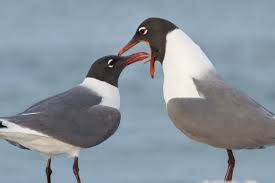Stamp: Sheik Rashid, White-eyed Gull (Ichthyaetus leucophthalmus) (Ajman 1967)
Sheik Rashid, White-eyed Gull (Ichthyaetus leucophthalmus) (Ajman 1967)
19 January (Ajman ) within release Native fauna goes into circulation Stamp Sheik Rashid, White-eyed Gull (Ichthyaetus leucophthalmus) face value 3 United Arab Emirates riyal
| Stamp Sheik Rashid, White-eyed Gull (Ichthyaetus leucophthalmus) in catalogues | |
|---|---|
| Michel: | Mi: AJ D17B |
| Colnect codes: | Col: AJ 1967.01.19-23a |
Stamp is square format.
Also in the issue Native fauna:
- Stamp - Sheik Rashid and Dromedary (Camelus dromedarius) face value 50;
- Stamp - Sheik Rashid and Dromedary (Camelus dromedarius) face value 50;
- Stamp - Sheik Rashid and Queen Angelfish (Holacanthus ciliaris) face value 75;
- Stamp - Sheik Rashid and Queen Angelfish (Holacanthus ciliaris) face value 75;
- Stamp - Sheik Rashid and Royal Angelfish (Pygoplites diacanthus) face value 40;
- Stamp - Sheik Rashid and Royal Angelfish (Pygoplites diacanthus) face value 40;
- Stamp - Sheikh Rashid and Arab Horse face value 25;
- Stamp - Sheikh Rashid and Arab Horse face value 25;
- Stamp - Sheikh Rashid and Jewell Fish face value 75;
- Stamp - Sheikh Rashid and Jewell Fish face value 75;
- Stamp - Shaikh Rashid and Lanner Falcon (Falco biarmicus) face value 5;
- Stamp - Shaikh Rashid and Lanner Falcon (Falco biarmicus) face value 5;
- Stamp - Sheik Rashid and Spur-thighed Tortoise (Testudo graeca) face value 1;
- Stamp - Sheik Rashid and Spur-thighed Tortoise (Testudo graeca) face value 1;
- Stamp - Sheik Rashid and White Stork (Ciconia ciconia) face value 2;
- Stamp - Sheik Rashid and White Stork (Ciconia ciconia) face value 2;
- Stamp - Sheik Rashid, White-eyed Gull (Ichthyaetus leucophthalmus) face value 3;
- Stamp - Sheik Rashid, White-eyed Gull (Ichthyaetus leucophthalmus) face value 3;
Stamp Sheik Rashid, White-eyed Gull (Ichthyaetus leucophthalmus) it reflects the thematic directions:
Animals are multicellular, eukaryotic organisms of the kingdom Animalia (also called Metazoa). All animals are motile, meaning they can move spontaneously and independently, at some point in their lives. Their body plan eventually becomes fixed as they develop, although some undergo a process of metamorphosis later on in their lives. All animals are heterotrophs: they must ingest other organisms or their products for sustenance.
Birds (Aves), a subgroup of Reptiles, are the last living examples of Dinosaurs. They are a group of endothermic vertebrates, characterised by feathers, toothless beaked jaws, the laying of hard-shelled eggs, a high metabolic rate, a four-chambered heart, and a strong yet lightweight skeleton. Birds live worldwide and range in size from the 5 cm (2 in) bee hummingbird to the 2.75 m (9 ft) ostrich. They rank as the class of tetrapods with the most living species, at approximately ten thousand, with more than half of these being passerines, sometimes known as perching birds. Birds are the closest living relatives of crocodilians.
Gulls, or colloquially seagulls, are seabirds of the family Laridae in the suborder Lari. They are most closely related to the terns and skimmers and distantly related to auks, and even more distantly to waders. Until the 21st century, most gulls were placed in the genus Larus, but that arrangement is now considered polyphyletic, leading to the resurrection of several genera.An older name for gulls is mews, which is cognate with German Möwe, Danish måge, Swedish mås, Dutch meeuw, Norwegian måke/måse, and French mouette, and can still be found in certain regional dialects
A head of state (or chief of state) is the public persona that officially represents the national unity and legitimacy of a sovereign state. In some countries, the head of state is a ceremonial figurehead with limited or no executive power, while in others, the head of state is also the head of government. In countries with parliamentary governments, the head of state is typically a ceremonial figurehead that does not actually guide day-to-day government activities and may not be empowered to exercise any kind of secular political authority (e.g., Queen Elizabeth II as Head of the Commonwealth). In countries where the head of state is also the head of government, the president serves as both a public figurehead and the actual highest ranking political leader who oversees the executive branch (e.g., the President of the United States).



